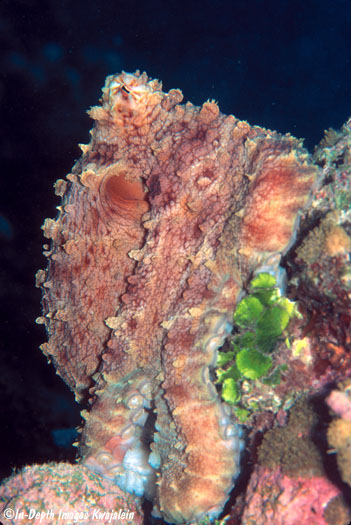
The largest and most commonly seen octopus at Kwajalein is the widespread species Octopus cyanea. Their ability to change color and texture is nothing short of amazing.


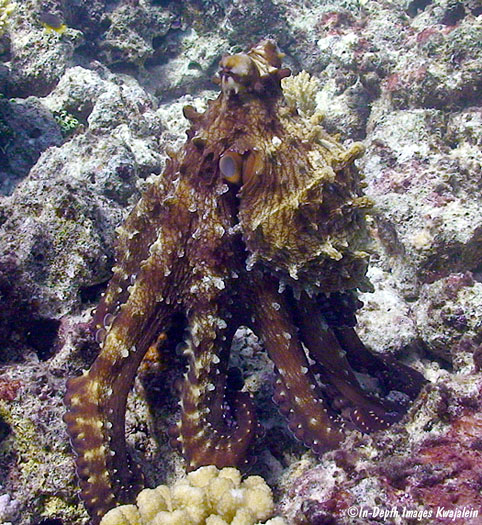
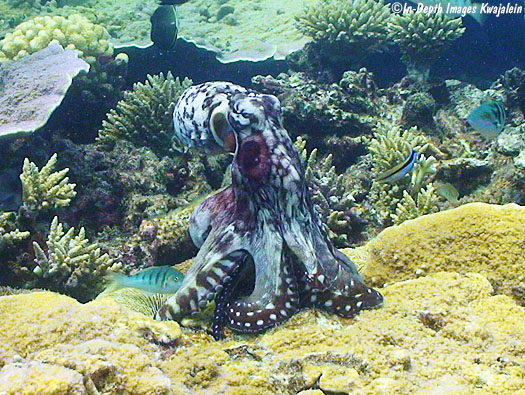
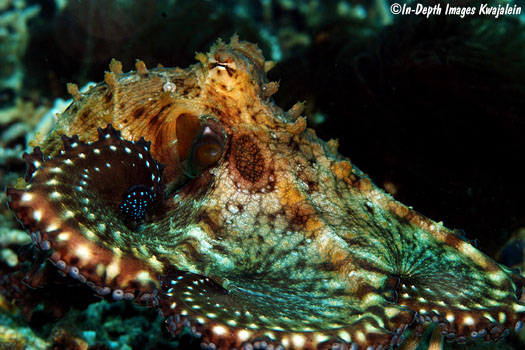
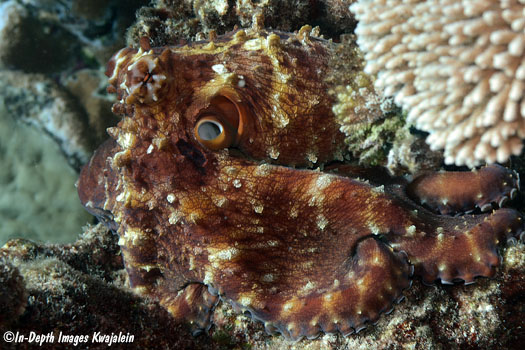
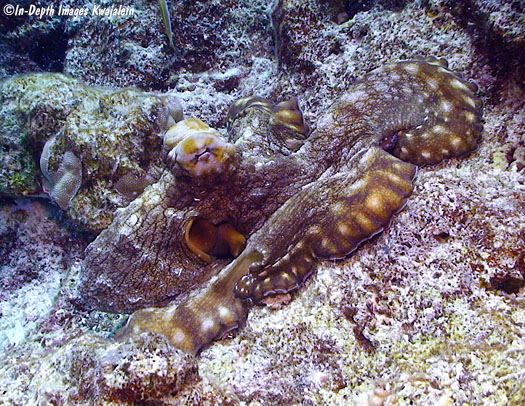
They are most often seen poking out a hole in the reef.
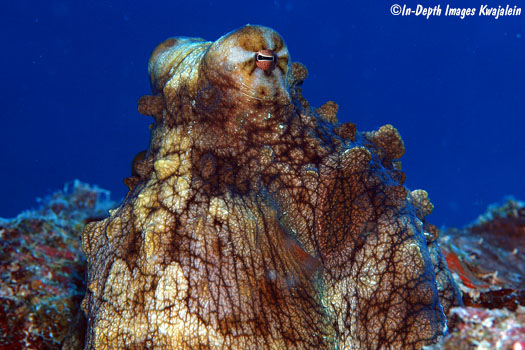
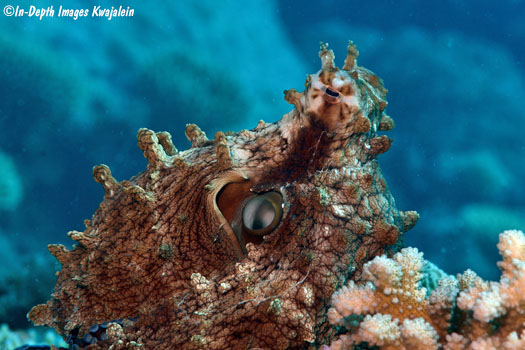
Color and texture changes can occur almost instantaneously. The two photos below are of the same animal taken only seconds apart. More color change shots can be seen here.
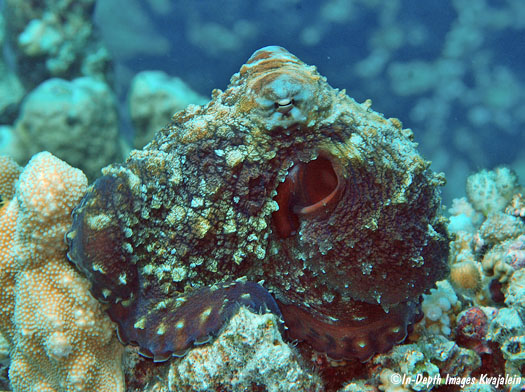
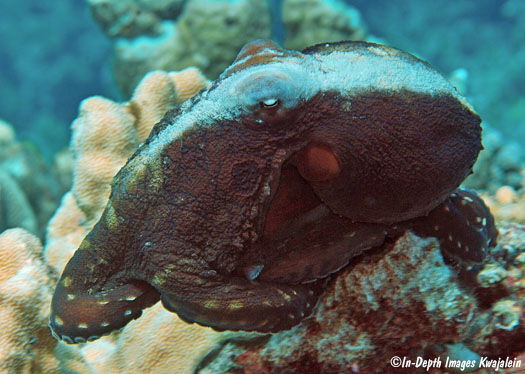
Sometimes they look as though they are tickling themselves with their own tentacles.
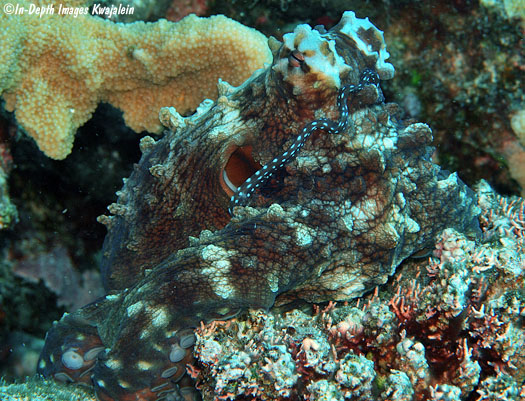
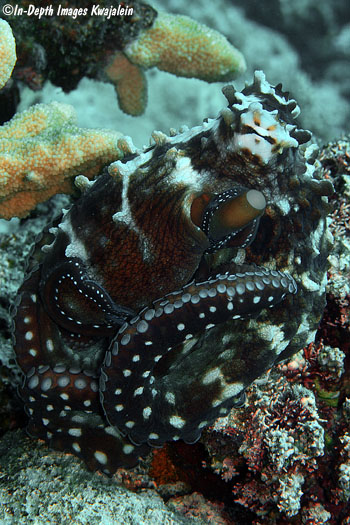
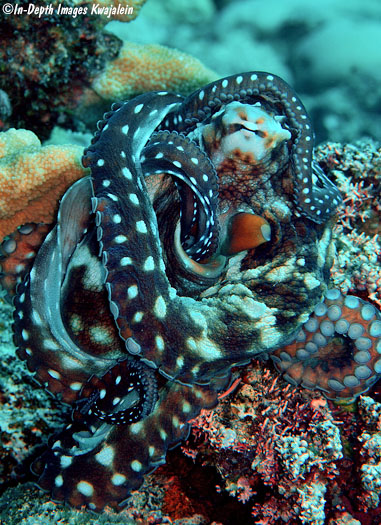
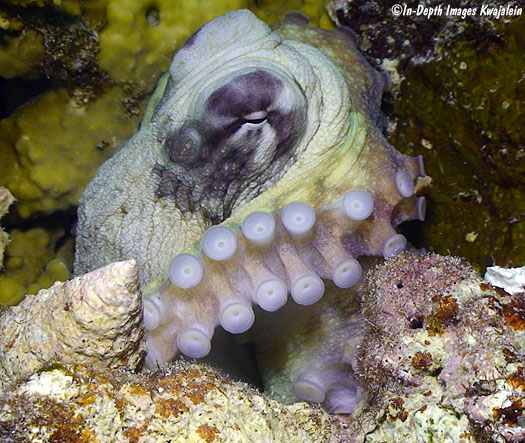
More photos of Octopus cyanea heads poking out holes can be seen here. Below are some closeups of octopus eyes.
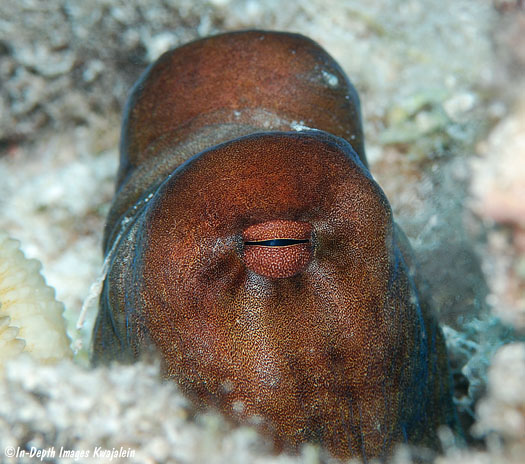
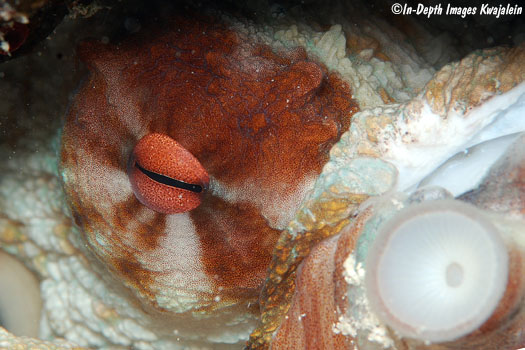
This one is passing a shell, probably an earlier meal, out of the hole.
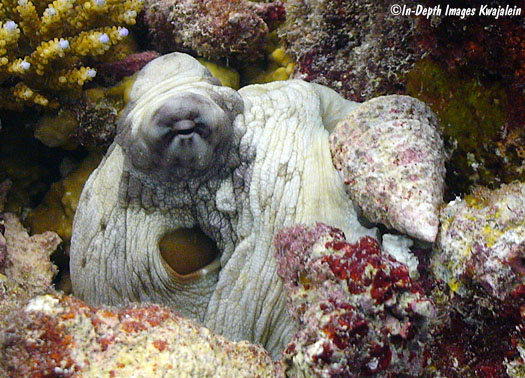
Reefs are often made up of piles of more or less loose rocks. An octopus will enlarge his hole by taking some of those rocks from the inside and piling them up around the opening to the den.
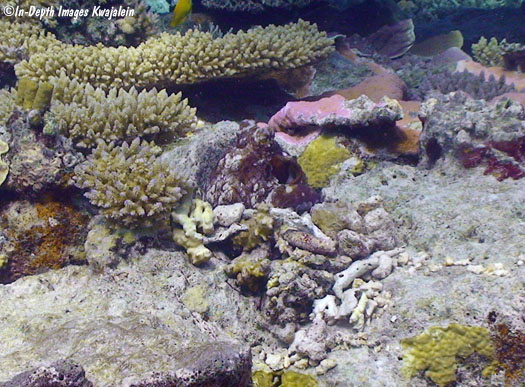
Just an octopus hole with loose coral rocks piled around the opening.
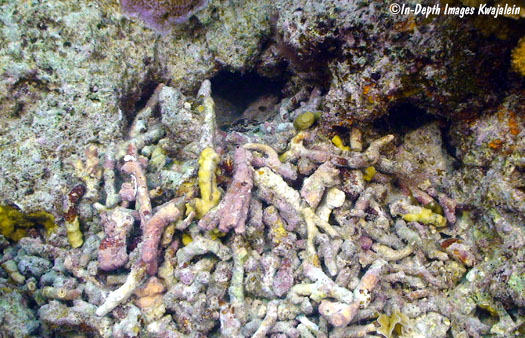
Octopus may inhabit one den for some time, piling up the remnants of his meals in a special trash area.
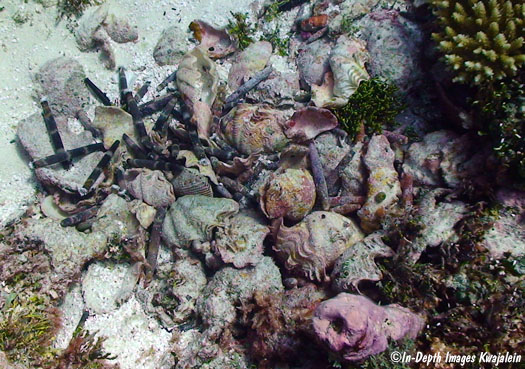
Often it seems that octopus seems to gather up various clam and snail shells from around the reef and take them to a favorite coral colony--an octopus dinner table--to extract the animal for feeding.
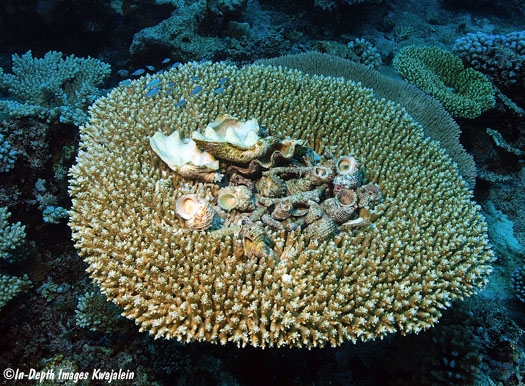
Some turban shells can apparently wedge their operculae so tightly into their aperture that even the octopus cannot pull them out. Sometimes the octopus will break through the back of the shell making a hole, but we have also still living Turbo left behind on a dinner table. More octopus trash piles and dinner tables can be seen here.
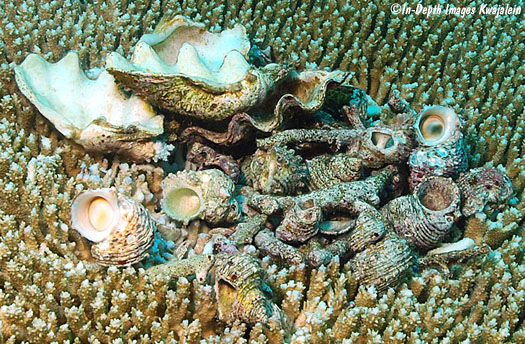
Created 13 September 2015